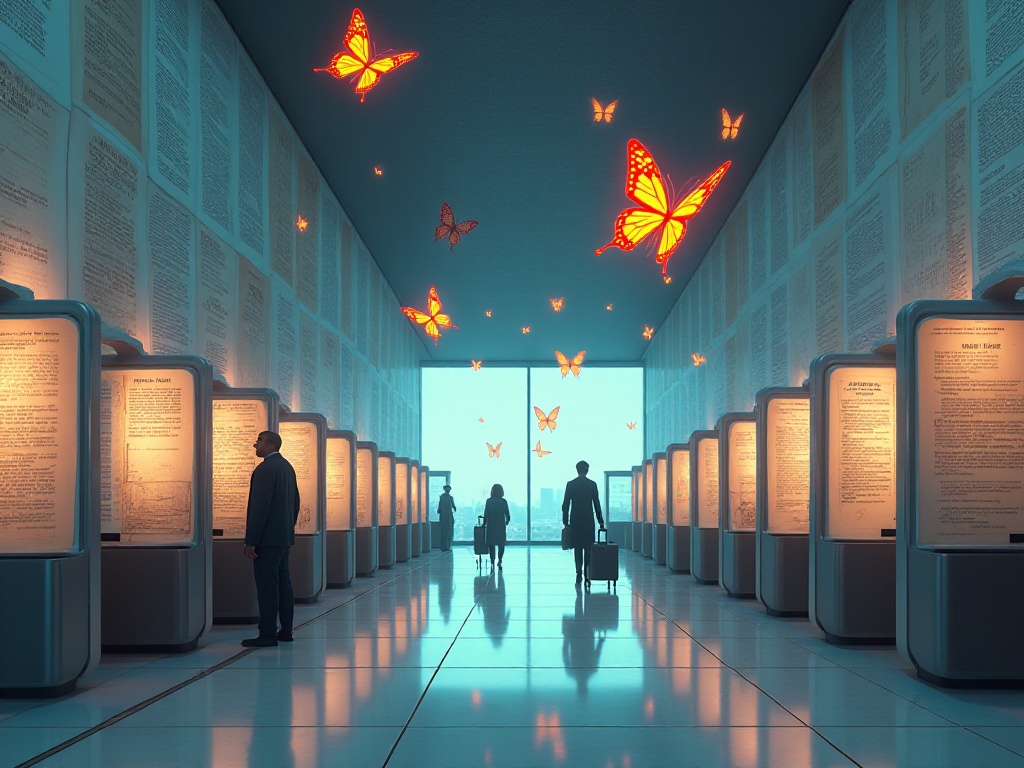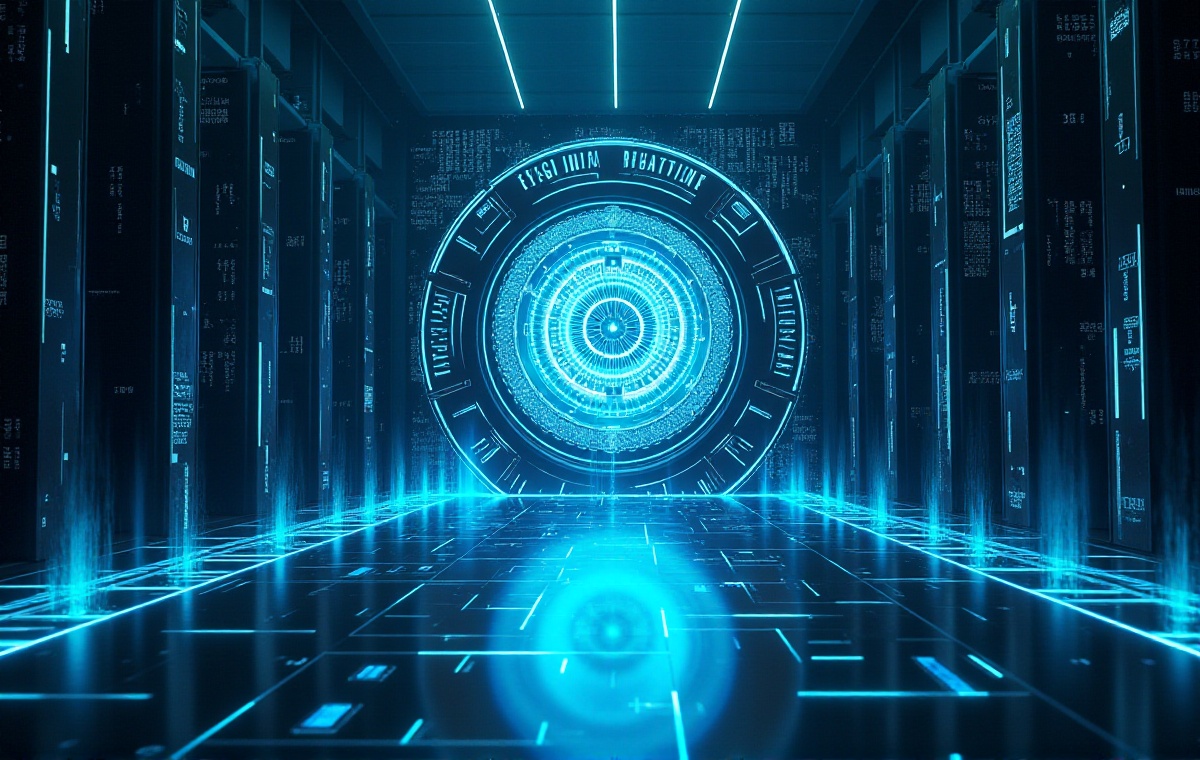Opening Chat
The other day, I helped my best friend Little A get her U.S. visa. Watching her receive the visa, she was as excited as a 200-pound child, jumping up and down. Honestly, I've gone through quite a few visa applications over the years, from initially being overwhelmed to now being able to help friends navigate the process smoothly. Today, I want to share my "visa insights" with you all, explaining those things that once puzzled me in the simplest way possible.
Demystifying Visas
Many people think "visa" sounds very sophisticated and feels distant from their lives. Actually, a visa is a very simple thing - it's like getting permission to visit someone's home. A visa is just a country's "entry permit" that says "welcome to visit."
The U.S. visa system is arguably the world's most rigorous, but also the most headache-inducing. When I first researched U.S. visas and saw so many types, I was completely overwhelmed. All those A-1, B-1, F-1, H-1B combinations made me feel like I was solving math problems. But today we'll focus on the most common B-type visa, commonly known as the tourist visa.

Visa Types
B-type visas mainly consist of B1 and B2. B1 is for those going to the U.S. for business, while B2 is for tourism. However, they now typically issue B1/B2 combination visas that serve both purposes. I remember one friend who was adorably worried about which type to apply for, but when she got to the embassy, they just gave her a combination visa - basically getting both benefits.
Regarding validity, Chinese citizens now typically receive 10-year multiple-entry visas. What does this mean? It means you can visit as many times as you want within those 10 years without worrying about visa expiration. However, note that each stay in the U.S. usually can't exceed 6 months. I have a friend who's really good at using this - she goes to the U.S. every winter to escape the cold, stays until she's had enough, then returns home and does it again the next year.

What You Can Do
There's so much you can do with a B-type visa! First, you can spend an entire day going crazy at Disneyland, riding all the roller coasters, taking photos with Mickey Mouse and Donald Duck, and eating ice cream while watching fireworks shows. I remember my first time there - I was absolutely thrilled, feeling like I'd returned to childhood.
You can also watch the sunrise at the Grand Canyon, which is truly indescribable. Imagine the first rays of morning light washing over the canyon, gradually turning it golden - that kind of impact will stay with you forever. I was particularly lucky on my visit and saw a rainbow - it was absolutely stunning.
New Year's Eve at Times Square is many people's dream. Although you have to stand in the cold wind for a long time, when the countdown begins and thousands of people cheer together as the crystal ball descends, you'll feel it was all worth it. Last year during New Year's, even though I was stamping my feet from the cold, the atmosphere was truly exhilarating.
If you have friends or relatives in the U.S., you can visit them too. However, note that such visits shouldn't be too long - generally keep them to one or two months. I have a cousin doing her Ph.D. in Boston, and I often visit her, helping ease her homesickness.
Business activities are also allowed, such as attending business meetings, negotiating deals, signing contracts, or even participating in short-term training courses. I have a friend who frequently goes to Silicon Valley for various tech summits, always returning with fresh ideas.
But there are some absolute no-nos. For instance, you can't work for pay in the U.S., even part-time. You can't take classes for credit at formal schools - that's for student visas. If you're a journalist, you can't report on B visas. And very importantly, it's now explicitly prohibited to give birth in the U.S. I know some people used to do this, but it's really not allowed anymore.

Application Strategy
The U.S. visa application process is like playing a video game - each step needs careful attention. Let me explain each step in detail.
First is filling out the DS-160 form. This form is like your "personal story," covering your major life experiences from birth until now. I was extremely careful my first time, worried that any mistake would affect my visa. The work experience section alone took forever because you need to list all previous jobs, including company names, addresses, positions, and job duties. When filling out the form, it's crucial that all information is truthful and accurate, as these details might come up during the interview.
There was a funny incident - a friend of mine hesitated for a long time on questions like "Have you ever participated in terrorist activities?" Actually, these questions don't need much thought - just honestly select "no." Another important point is to save frequently while filling out the form, as the system might crash and you could lose all your hard work. I learned this lesson the hard way - now I save after completing each page.
Scheduling the interview is the second step. This step seems simple but has many nuances. First, you should know that interview times can be changed at any time, so don't worry too much if your first appointment isn't ideal. I suggest securing a slot first, and you can always change it later if needed. New slots usually become available at midnight, so if you need a near-term appointment, try checking then.
I once encountered an interesting situation - while helping a friend book an appointment, I found Beijing had very long wait times, but Chengdu was much quicker. So if you're in a hurry, consider applying at other consular districts - it's completely allowed. However, note that once you've chosen a district, you can't easily switch.
Preparing interview materials is the most time-consuming step. I recommend organizing materials in a folder by category - it makes them much easier to find during the interview. Essential materials include: passport (valid for at least 6 months), DS-160 confirmation page (with the large barcode), appointment confirmation letter, photo (meeting U.S. visa requirements - best taken at a professional studio), ID card, and household registration book.
Financial proof is also crucial. It's recommended to prepare the last 6 months of bank statements, and maintain a reasonable balance. There's no fixed amount requirement, but it should match your income level. I've seen too many people suddenly transfer large sums into their accounts for the visa - this actually tends to raise suspicion. It's better to show normal income and spending patterns, like salary deposits and daily expenses.
If you're employed, a work certificate is essential. This should be printed on company letterhead with a leader's signature and company seal. It should include your position, start date, and job responsibilities. A friend of mine was extensively questioned about their work because their certificate was too simple.
For students, besides your student ID, it's good to have a school enrollment certificate. If you're working but haven't been at your job long, consider bringing your diploma too. The goal is to help the visa officer clearly understand your educational and work background.
While not required, I recommend preparing an itinerary. It doesn't need to be too detailed - just list which cities you plan to visit, where you'll stay, and roughly how long. I usually print flight and hotel reservations too - rarely needed, but better safe than sorry.

Interview Tips
The interview is probably the most nerve-wracking part of the visa process. But with good preparation and a calm mindset, it's not so scary.
People often worry about what to wear. You don't need to be too formal or too casual. I suggest business casual - men can wear a shirt and slacks, women can wear a simple dress or professional suit. The key is to look neat and put-together. I've seen people wear expensive brands to interviews, which actually looked try-hard.
Answer technique is important. Visa officers' time is valuable, so answers should be concise and to the point. If asked why you're going to the U.S., just say "tourism" - no need for details unless they ask. I made this mistake in my first interview, talking non-stop until the officer clearly became impatient.
Regarding language, don't worry too much if your English isn't great. Visa officers generally speak basic Chinese - you can request to communicate in Chinese if needed. But if your English is okay, answering in English makes a better impression. I have a friend with basic English who honestly said: "Sorry, my English is not very good, can I speak Chinese?" The officer appreciated her honesty and approved her visa.
Position yourself properly during the interview. Stand behind the yellow line, maintaining appropriate distance from the window. Keep your hands naturally on the counter, don't fidget. Make eye contact with the officer and try to appear natural and confident. I've seen too many people get unnecessarily nervous.
Don't panic if the officer asks tricky questions. If asked about specific income figures and you can't remember exactly, give a range. If unsure about something, it's fine to say "I'm not quite sure about that." Honesty is always the best policy.
Practical Advice
Through many visa experiences, I've gathered some practical tips to help you avoid common pitfalls.
First, about financial proof. Many think more money in the account is better, but that's not true. What matters is stable income sources and normal fund movements. Sudden large deposits actually raise suspicion. I recommend at least six months of bank statements showing stable salary income and normal spending patterns.
When preparing materials, make several copies. While originals are mainly used now, having copies of important documents like passports and IDs is always good - prepare 2-3 copies of each.
Arrive early on interview day. I suggest at least an hour before, as you'll need to go through security. Early arrival also gives you time to compose yourself rather than appearing rushed.
If it's your first visa application, consider having an experienced friend accompany you. Though they can't enter the embassy with you, they can provide moral support. On my first interview, going with a friend who already had a visa helped calm my nerves just by chatting.
Don't be too discouraged if rejected. Unlike visas for other countries, one rejection doesn't mean you can never get a U.S. visa. I know people who succeeded on their second try after analyzing and addressing the reasons for their first rejection.

Final Thoughts
After all this, the core of getting a U.S. visa is: thorough preparation, honest attitude, and calm mindset. Don't be misled by online "tips" like wearing certain colors or using specific phrases - these have no scientific basis.
Remember, visa officers care most about applicants' credibility and likelihood of return. If you can prove you're traveling for genuine tourism or business purposes, have stable work and finances, and will return on time, your chances are good.
Finally, applying for a visa really isn't so scary. So many people successfully get U.S. visas each year - you can too. Stay confident, prepare well, and soon you'll have that passport page with a U.S. visa, ready to start your American journey!


